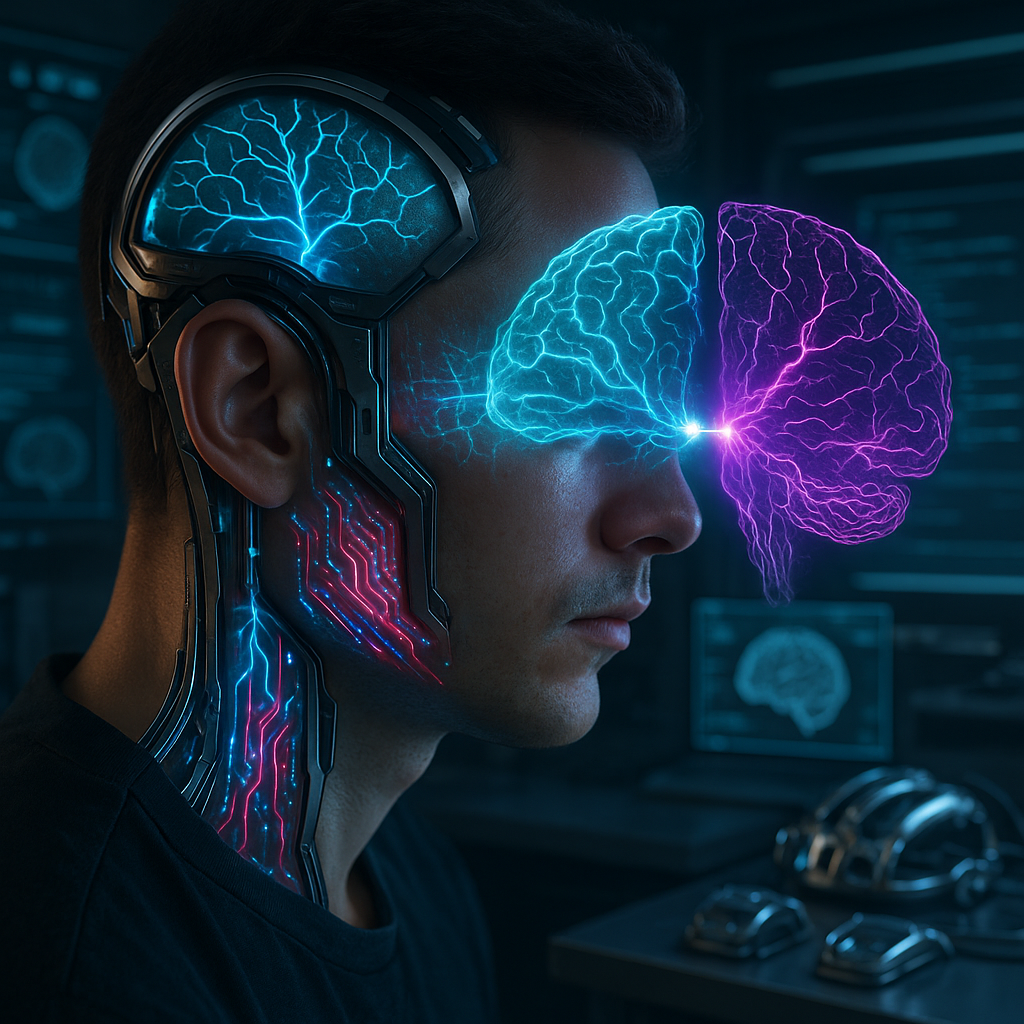Key Takeaways
- Human-AI Symbiosis Forecast: Ray Kurzweil predicts full integration between biological minds and AI systems within the next decade.
- Beyond Brain-Computer Interfaces: Kurzweil’s vision extends past wearables, imagining AI as a seamless cognitive extension of consciousness.
- Redefining Intelligence: He challenges conventional ideas about intelligence and consciousness in a post-symbiotic age.
- Ethical and Social Ramifications: The prospect raises urgent questions about privacy, agency, and identity as the distinction between self and system blurs.
- Debate and Skepticism: Experts remain divided, citing technological, ethical, and philosophical obstacles that could alter or delay this timeline.
- Next Steps: Kurzweil points to new research initiatives and public dialogues exploring the philosophical frontiers of human-AI fusion.
Introduction
Futurist Ray Kurzweil told a technology conference this week that he expects the boundaries between human minds and artificial intelligence to dissolve by the 2030s. He predicts not just brain-computer interfaces but a true merging of biological and synthetic thought. If realized, Kurzweil’s vision could force society to rethink foundational concepts such as intelligence, agency, and identity as humans and machines become deeply entwined.
Kurzweil’s Vision of Human-AI Symbiosis
Ray Kurzweil imagines a 2030s era where human thought and artificial intelligence are fundamentally intertwined through direct neural interfaces. Serving as Google’s Director of Engineering, he views this timeline as the next step in human-machine evolution, advancing from today’s external devices to integrated neural enhancement.
These neural interfaces would allow direct communication between thought and digital systems, enabling humans to process information at machine speeds. Kurzweil suggests this integration will exponentially amplify human intelligence, promoting what he calls “hybrid thinking” (where biological and artificial cognition merge seamlessly).
Expert reactions to Kurzweil’s predictions remain divided. Some neuroscientists acknowledge the potential, while questioning the timeline. Dr. Sarah Chen, a neural engineering researcher at MIT, stated that although underlying technology exists in primitive forms, the complexity of neural integration poses unprecedented challenges.
Stay Sharp. Stay Ahead.
Join our Telegram Channel for exclusive content, real insights,
engage with us and other members and get access to
insider updates, early news and top insights.
 Join the Channel
Join the Channel
Technical Foundations and Current Progress
Development of brain-computer interfaces has accelerated, with companies such as Neuralink and Synchron already conducting human trials. These early devices primarily address medical applications, helping patients with paralysis control technology through thought.
Recent advancements in neural mapping and nanoscale electronics have moved Kurzweil’s vision closer. Researchers at Stanford’s Neural Prosthetics Lab have demonstrated two-way communication between synthetic and biological neurons. That’s a crucial step toward deeper integration.
The convergence of artificial intelligence and neuroscience is revealing striking parallels between neural networks and brain function. Dr. James Morrison from the Brain-Machine Interfaces Initiative notes that “artificial and biological neural networks share fundamental operational principles.”
Philosophical and Ethical Implications
The prospect of human-AI symbiosis prompts deep questions on consciousness and identity. Philosophers debate whether enhanced cognition would alter human consciousness or simply extend existing mental capabilities.
Privacy emerges as a central ethical challenge, since neural interfaces could access intimate thoughts and memories. Dr. Elena Rodriguez, neuroethicist at Oxford, emphasizes the need to create robust frameworks for mental privacy prior to widespread adoption.
Wider access to neural enhancement technologies raises concerns about inequality and the potential emergence of cognitive classes. This could reshape social structures and relationships.
Scientific Challenges and Skepticism
Significant technical challenges remain, especially regarding the long-term stability of neural interfaces. The brain’s complexity and adaptability create hurdles for creating lasting connections between biological and artificial systems.
Immunological responses to neural implants continue to trouble researchers. Some suggest that Kurzweil’s timeline is optimistic. Dr. Michael Chang of the Neural Engineering Institute explained that the brain’s natural defenses against foreign objects present major obstacles.
Security researchers highlight the risks associated with networked neural interfaces. The potential for cognitive hacking or unauthorized neural access underscores the need for unprecedented security measures before widespread adoption.
Societal Implications and Future Directions
The merging of human and artificial intelligence could transform education, professional development, and social interaction. Educational institutions are already considering how to prepare students for a future where neural learning might be possible.
In the workplace, human-AI symbiosis may enable new forms of collaboration and creativity. Analysts predict the emergence of professions focused on managing and optimizing human-AI integration.
Healthcare experts anticipate dramatic changes in mental health treatment and cognitive enhancement. Direct neural interfaces could revolutionize the treatment of neurological conditions and mental illness.
Conclusion
Kurzweil’s forecast of human and AI minds intertwining by the 2030s distills both the promise and complexity of neural integration. It challenges our understanding of intelligence, ethics, and social transformation. As brain-computer interface research evolves and philosophical debates deepen, the practical and ethical foundations of symbiotic cognition are only beginning to take shape. What to watch: ongoing clinical trials and new policy frameworks that address mental privacy and neural security.





Leave a Reply